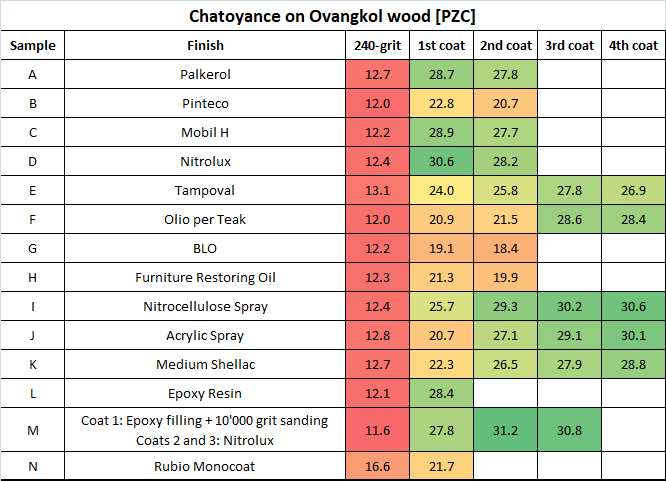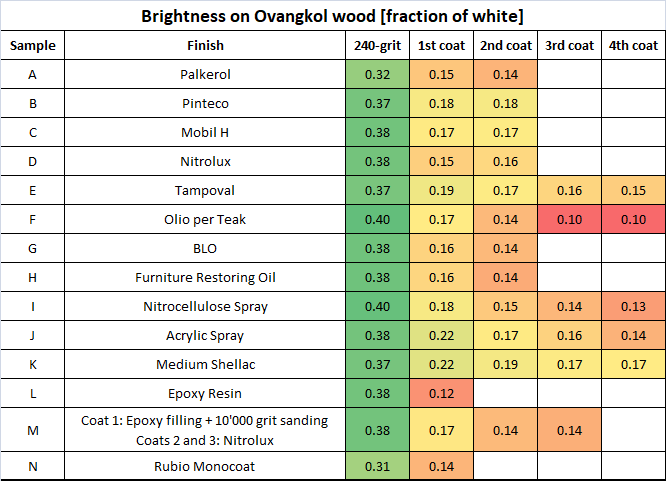This set of tests is aimed at understanding the effect of different finishes on Ovangkol.
A set of 13 consecutive veneer sheets (from “A” to “M”) were employed; these consecutive layers of the initial log and start from very similar PZC values. All samples were sanded to 240-grit.
A special thanks goes to company Seralvo for providing the veneer samples and Veleca for supporting us with finish samples.
We tested these finishes:
Sample A: Veleca Palkerol (water based anionic polyurethane – floor finish)
Sample B: Veleca Pinteco (acrylic emulsion – outdoor finish)
Sample C: Veleca Mobil H (water based acrylic – furniture finish)
Sample D: Veleca Nitrolux (thinner based ketone resin – classic furniture finish)
Sample E: Veleca Tampoval (blonde dewaxed shellac – antique furniture finish)
Sample F: Veleca Olio per Teak (Tung oil based – exotic wood finish)
Sample G: Boiled Linseed Oil (BLO)
Sample H: Furniture restoring oil
Sample I: Nitrocellulose spray lacquer (NCL)
Sample J: Acrylic spray lacquer
Sample K: Blonde Dewaxed Shellac “Medium” (2 parts in 13 parts of Alcohol)
Sample L: Transparent epoxy resin
Sample M: A more complex sequence: sanding to #800, then pore filling with epoxy, then sanding to #10’000, then Veleca Nitrolux
Sample N: Rubio Monocoat
It was concluded that:
1) Chatoyance is significantly increased by some of these clear coats
2) Nitrolux, Nitrocellulose or Acrylic lacquers provide the best results
3) The complex procedure applied on sample M did not yield significant advantages
3) Some of these “clear” finishes significantly darken the surface
Tables below summarize the results in terms of chatoyance (PZC):

Tables below summarize the results in terms of brightness (fraction of white paper brightness):

Pictures below show the results:














